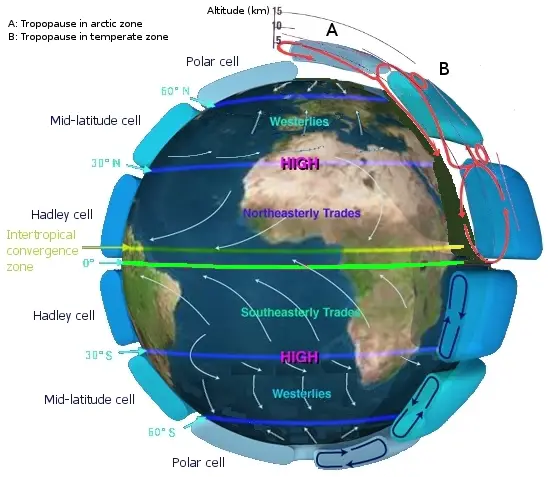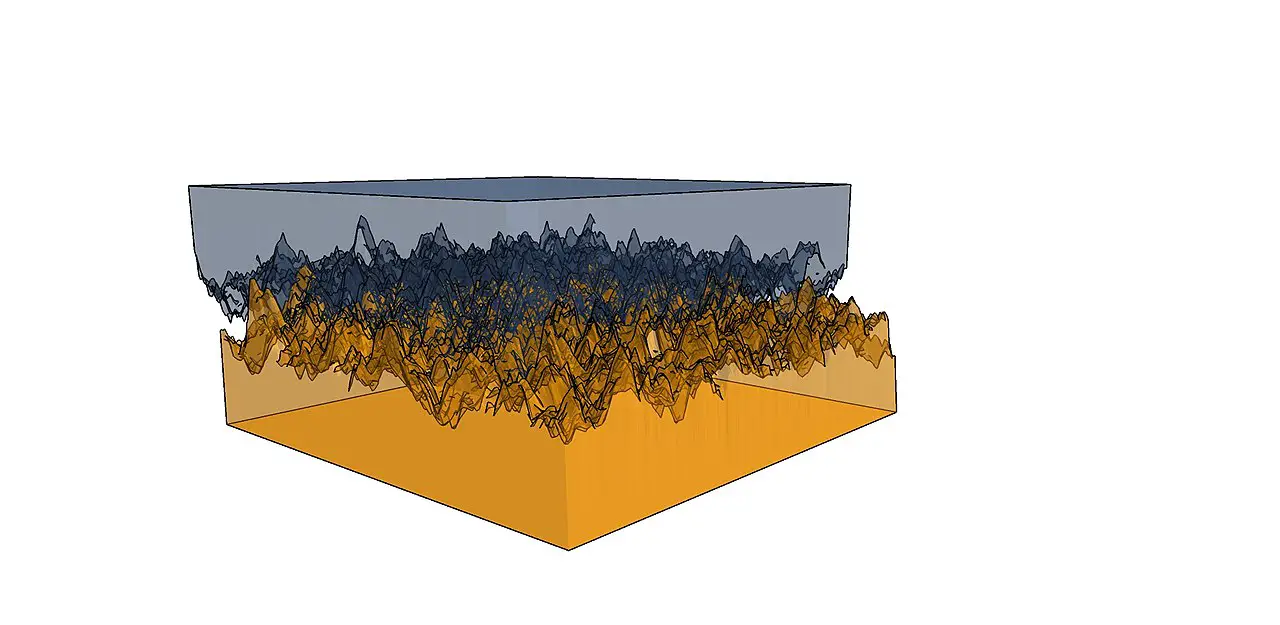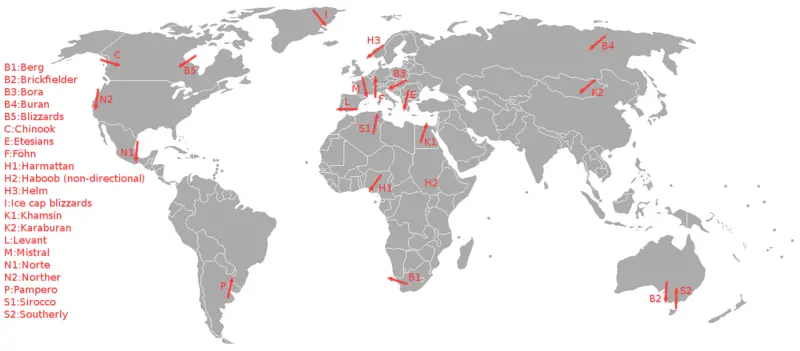How can wind be defined?
Wind is the movement of the air through the Earth’s atmosphere. The air around us is made up of the gas forms of different elements, such as nitrogen, oxygen, carbon dioxide, and hydrogen. When those gases move together, it is referred to as wind.

What causes the wind?
One purpose of the Earth’s atmosphere is to regulate the pressure on the surface of the Earth. In the process of changing the pressure systems moving around the globe, the different pressures can shift against each other and create wind.
Generally, the way the pressure systems move is from an area where pressure has built up to a high amount down to an area where there is much lower pressure. The larger the differences in pressure that these areas have, the stronger the winds become.

The atmosphere controls the pressure of the Earth’s surface by first controlling the temperature. Thus, the differences in air pressure that cause wind are originally caused by changes in temperature.
High pressure areas arise from cooler temperatures, and low pressure areas arise from warmer temperatures. In general, warmer air rises up, and the cooler air will shift to flow beneath it. That is what leads to wind.
How do scientists study wind?
Whereas a seismograph will measure and record magnitude of an earthquake, wind is measured in terms of its direction and its speed of travel.
The direction of the wind is described in terms of which cardinal direction it came from. For instance, one might say that a wind is coming from the north. This is done using objects such as windsocks, flags, and weather vanes.
The speed of the wind is described in terms of miles or kilometers per hour. There is a specific piece of equipment called an anemometer that measures the speed of the wind as it occurs.
Information such as direction and speed of wind is usually reported in the daily weather forecast.
What are global winds versus local winds?
Local winds are those that are caused by differences in temperature and air pressure within a specific region, as mentioned above. Local winds can change day by day, or even more than once in a day.
For instance, wind that blows inland from the ocean and creates a sea breeze is caused by the difference in air temperature between the land and ocean, and is considered a local wind, because it only affects that region.
Global winds, however are large, consistent patterns of air movement that occur around the world. There are multiple causes of global winds. The first cause is the rotation of the Earth, which creates a wind in a process called the Coriolis Effect.
Another cause of global wind is the large difference in temperature between the entire region of the Earth’s equator and all of the land mass of the Earth’s two poles. These are called trade winds (which blow towards the equator from the poles), prevailing westerlies, or polar easterlies.
Polar easterlies blow east to west around the North and South poles, and prevailing westerlies blow from the equator towards the poles in a westward direction.

Questions:
- What is wind?
- How does the atmosphere control the pressure of the Earth’s surface?
- What is the difference between high pressure areas and low pressure areas?
- How do scientists study wind?
- How is speed of wind described?
Answers:
- Wind is the movement of the air through the Earth’s atmosphere.
- The atmosphere controls the pressure of the Earth’s surface by first controlling the temperature.
- High pressure areas arise from cooler temperatures, and low pressure areas arise from warmer temperatures.
- Wind is measured in terms of its direction and its speed of travel.
- The speed of the wind is described in terms of miles or kilometers per hour.